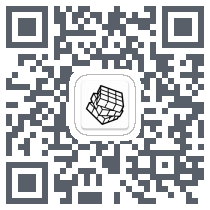Alan Turing Biography: Computer Pioneer, Gay Icon
, he developed a machine that helped break the German Enigma code. He also laid the ground
work for modern computing and theorized about artificial intelligence.An openly gay man du
ring a time when homosexual acts were illegal in Britain, Turing committed suicide after b
egin convicted of "gross indecency" and sentenced to a procedure some call "chemical castr
ation." He has since become a martyred hero of the gay community. In late 2013, nearly 60
years after his death, Queen Elizabeth II formally pardoned him.Early lifeBorn on June 23,
1912, Turing was part of an upper-middle-class British family involved in colonial India.
Science was a passion for young Turing, who often took part in primitive chemistry experi
ments. Before applying to schools, Turing was already theorizing on relativity and quantum
mechanics.While attending King's College, Cambridge, Turing focused on his studies, and h
is passion for probability theory and mathematical logic propelled his career. At the same
time, he was also becoming more aware of his identity as a gay man, and his philosophy wa
s becoming closely aligned with the liberal left.Turing machineIn the years after college,
Turing began to consider whether a method or process could be devised that could decide w
hether a given mathematical assertion was provable. Turing analyzed the methodical process
, focusing on logical instructions, the action of the mind, and a machine that could be em
bodied as a physical form. Turing developed the proof that automatic computation cannot so
lve all mathematical problems. This concept became known as the Turing machine, which has
become the foundation of the modern theory of computation and computability.Turing took th
is idea and imagined the possibility of multiple Turing machines, each corresponding to a
different method or algorithm. Each algorithm would be written out as a set of instruction
s in a standard form, and the actual interpretation work would be considered a mechanical
process. Thus, each particular Turing machine embodied the algorithm, and a universal Turi
ng machine could do all possible tasks. Essentially, through this theorizing, Turing creat
ed the computer: a single machine that can be turned to any well-defined task by being sup
plied with an algorithm, or a program.Turing moved to the United States to continue his gr
aduate studies at Princeton. He worked on algebra and number theory, as well as a cipher m
achine based on electromagnetic relays to multiply binary numbers. He took this research b
ack to England with him, where he secretly worked part time for the British cryptanalytic
department. After the British declared war in 1939, Turing took up full-time cryptanalytic
work at Bletchley Park.Enigma codeTuring made it his goal to crack the complex Enigma cod
e used in German naval communications, which were generally regarded as unbreakable. Turin
g cracked the system and regular decryption of German messages began in mid-1941. To maint
ain progress on code-breaking, Turing introduced the use of electronic technology to gain
higher speeds of mechanical working. Turing became an invaluable asset to the Allies, succ
essfully decoding many German messages. [Video: Decoding the Mysterious World of Code-Brea
kers]By the end of the war, Turing was the only scientist working on the idea of a univers
al machine that could plug into the potential speed and reliability of electronic technolo
gy. This led to the development of early hardware and the implementation of arithmetical f
unctions by programming, and thus, computer science was born. Turing became well-regarded
by the scientific community, as the director of the computing laboratory at Manchester Uni
versity and an elected fellow of the Royal Society.Turing testTuring was also involved in
philosophical debates over whether machines could think like a human brain. He devised a t
est to answer the question. He reasoned that if a computer acted, reacted and interacted l
ike a sentient being, then it was sentient. [Related: What is The Singularity?]In this sim
ple test, an interrogator in isolation asks questions of another person and a computer. Th
e questioner then must distinguish between the human and the computer based on their repli
es to his questions. If the computer can "fool" the interrogator, it is intelligent. Today
, the Turing Test is at the heart of discussions about artificial intelligence.Gross indec
encyTuring had never been secretive about his homosexuality. He was outspoken and exuberan
t about his lifestyle, openly taking male lovers. When police discovered his sexual relati
onship with a young man, he was arrested and came to trial in 1952. Turing never denied or
defended his actions, instead asserting that there was nothing wrong with what he did. Th
e courts disagreed, and Turing was convicted of gross indecency. In order to avoid prison,
Turing had to agree to undergo a series of estrogen injections. [Countdown: 10 Milestones
in Gay Rights History]He continued his work in quantum physics and in cryptanalytics, but
known homosexuals were ineligible for security clearance. Bitter over being turned away f
rom the field he had revolutionized, Turing committed suicide in 1954 by ingesting cyanide
.In 2009, Prime Minister Gordon Brown publicly apologized for how the scientist was treate
d. And in December 2013, Queen Elizabeth II formally pardoned Turing. A British government
statement said, "Turing was an exceptional man with a brilliant mind" who "deserves to be
remembered and recognized for his fantastic contribution to the war effort and his legacy
to science."Alan Turing quotes"We can only see a short distance ahead, but we can see ple
nty there that needs to be done.""I believe that at the end of the century the use of word
s and general educated opinion will have altered so much that one will be able to speak of
machines thinking without expecting to be contradicted.""Mathematical reasoning may be re
garded rather schematically as the exercise of a combination of two facilities, which we m
ay call intuition and ingenuity."




